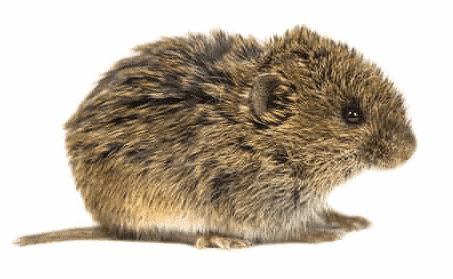Reliable Pest Control Solutions for Vole Infestations

In the realm of pest control, vole infestations offer an unique obstacle that requires a tactical method. By delving right into the intricacies of vole actions and discovering a variety of control methods, a comprehensive pest management strategy tailored to these elusive animals can be crafted. From natural repellents to cutting-edge capturing methods, the arsenal versus vole invasions is multi-faceted.
Comprehending Vole Behavior
Voles, tiny rats typically found in areas and yards, exhibit distinct habits patterns that are essential to understand when carrying out insect control actions - utah vole control. These animals are prolific miners, producing a comprehensive network of passages underground where they nest, store food, and look for shelter from killers and harsh weather. Voles are herbivores and primarily prey on turfs, origins, seeds, and light bulbs, making gardens and areas optimal environments for them
One secret actions of voles is their rapid price of recreation. Ladies can provide birth to numerous trashes every year, with clutter sizes ranging from 3 to six dogs. This high reproductive ability allows vole populations to promptly multiply, causing problems if left unchecked.
Comprehending vole actions also entails recognizing their patterns of movement and foraging. Voles produce surface area paths in verdant locations as they travel between their burrows and food sources. By observing these runways and the places of burrow entries, insect control professionals can determine high-traffic locations and purposefully area catches or deterrents to effectively manage vole populaces.
All-natural Repellents and Deterrents
With an understanding of vole behavior as a structure, discovering natural repellents and deterrents becomes necessary in properly managing vole infestations in fields and gardens. Natural repellents offer a environmentally friendly and sustainable approach to discouraging voles without causing damage to other wildlife or the community. Planting daffodils, crown imperials, or other vole-resistant bulbs can aid maintain voles away because of their unattractive taste and smell. In addition, including predator pee, such as that of foxes or prairie wolves, around the garden perimeter can produce an all-natural obstacle that signifies risk to voles, urging them to keep away.
Furthermore, using castor oil-based repellents can disrupt vole passages as they find the odor and preference unpleasant, motivating them to move. Mulching with products like gravel, lava rocks, or rugged sand can additionally discourage voles as they do not like excavating through these harsh substances. Carrying out a mix of these all-natural repellents and deterrents can help efficiently take care of vole populations in a lasting and non-toxic way, guarding crops and gardens from vole damages.
Trapping Strategies for Voles

Break catches are developed to eliminate voles promptly upon activation. These traps should be put in areas where voles are understood to travel, such as close to burrow entrances useful content or along their paths. It is vital to examine snap traps regularly and take care of any recorded voles quickly to make certain the effectiveness of the capturing process.
Live traps are an extra humane alternative for those who want to capture voles without damaging them. As soon as a vole is caught in an online catch, it can be safely moved to a different place and launched unscathed. Live traps must be checked often to protect against tension or damage to the recorded voles.
When setting traps for voles, it is vital to consider their behavior and practices to boost the probability of success (vole control utah). By utilizing the proper capturing strategies, vole populaces can be effectively managed, minimizing the damages they create to farming and garden areas
Carrying Out Physical Obstacles
To better strengthen the defense against vole infestations, the tactical implementation of physical obstacles arises as a positive step to safeguard farming and yard areas. Physical obstacles such as cord mesh, hardware cloth, or fencings can be set up underground to protect against voles from delving into fields or yards.
In addition, the usage of tree guards or trunk wraps constructed from metal or plastic can shield tree trunks from vole damage during wintertime months when other food sources are limited. These guards must extend over the expected snow line to prevent voles from gnawing on the bark. Normal assessment and maintenance of these obstacles are essential to ensure their proceeded performance in deterring vole intrusions and protecting beneficial plants and plants.
Integrated Parasite Administration Techniques
Integrating various bug control methods, including organic controls, habitat adjustment, and monitoring, develops the basis of effective Integrated Insect Monitoring techniques for addressing vole infestations. Organic controls entail introducing all-natural killers of voles, such as snakes or owls, to the damaged area to assist lower vole populations. Habitat control focuses on modifying the atmosphere to make it much less beneficial for voles, such as minimizing ground cover or eliminating food sources. Tracking plays an essential duty in Integrated Pest Administration by permitting for the very early detection of vole infestations and examining the effectiveness of control techniques utilized.
Conclusion
To conclude, efficient insect control options for vole invasions entail understanding vole behavior, utilizing natural repellents and deterrents, carrying out capturing methods, and establishing up physical obstacles. Integrated pest management techniques can likewise be utilized to attend to vole problems adequately. By incorporating these approaches, building owners can successfully handle and minimize vole populaces without the requirement for extreme pesticide use.
With an this hyperlink understanding of vole behavior as a foundation, discovering all-natural repellents and deterrents comes to be essential in efficiently handling vole infestations in fields and yards. Applying a combination of these natural repellents and deterrents see here can aid successfully handle vole populations in a lasting and non-toxic way, securing crops and yards from vole damages.
Integrating different parasite control techniques, consisting of biological controls, environment adjustment, and monitoring, forms the basis of reliable Integrated Bug Administration approaches for attending to vole infestations. Organic controls include presenting natural killers of voles, such as owls or snakes, to the afflicted area to assist reduce vole populations (vole control utah).In final thought, effective bug control solutions for vole invasions entail understanding vole habits, making use of natural repellents and deterrents, applying trapping methods, and establishing up physical barriers
Comments on “Professional Recommendations for Vole Control Utah County”